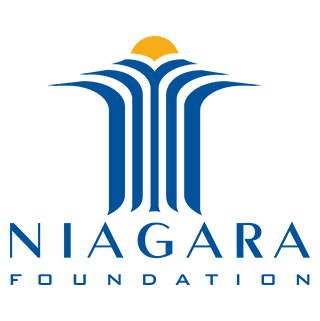By: Hannah Ward, Intern at Niagara Foundation
Niagara held the second Sacred Sources program last week. A program that we hope to continue and expand on, Sacred Sources is an opportunity for religious leaders from a variety of spiritual and professional backgrounds to learn about other faiths as well as their own through close readings and group discussions of various sacred texts. It was an enlightening meeting thanks to the knowledgeable religious leaders who attended, the respectful manner in which everyone discussed the prayers, and the power of the sacred texts. Continuing and building off the initial Sacred Sources gathering in December, this program focused on prayers that are integral to Judaism, Islam, and Christianity.
The program underwent a few alterations from the initial Sacred Sources gathering with the intention of expanding on the most successful parts of the program while also exploring how different ways of organizing the discussion might be helpful. About twenty religious leaders joined Niagara in our office to discuss the Jewish Shema, the Muslim Surat al-Fatiha, and the Christian Our Father prayers. After lunch and a brief introduction, everyone split into groups of four or five people to study the prayers in a more intimate setting. The groups had a few minutes to read each prayer, discuss their thoughts, and ask questions. We utilized the mutual invitation process to structure the conversation. When one person stopped speaking they would invite someone else to speak, which encouraged a balanced and welcoming conversation.
In the group I observed, the member of each faith read the text of their religion, started the discussion, and then invited someone to speak. Rabbi Zedek began by reading the Shema. He explained that it is traditional to close your eyes while saying the first line of the Shema, “When I close my eyes that is as close as I can get to seeing infinity.” Rabbi Zedek also brought up the idea of what it means to love God, which he saw as a main theme of the prayer. This led to much discussion about the different ways of loving God both as described in the prayer and in Jewish tradition.
These prayers are well known and recited often, so it can be challenging to continue learning new ideas from them. As Rabbi Zedek said about the Shema, “I recite this prayer twice a day, and I can’t imagine my day without it and the reminder it comes with. I am conditioned to it, but it’s still very powerful.” Dr. Scott Alexander, professor at Catholic Theological Union, explained how these prayers can be given new life and meaning regardless of how many times they have been recited. He focused on the verbs used in the prayer and explained how the prayer focused on action centered on God in time and space without limits. In response, Rabbi Balinsky said, “You’ve just altered the way I see this.” This type of interaction and mutual learning is one of the positives of interfaith study and discussion. As Dr. Alexander later stated, “Sometimes outsiders can see something in our treasures that we can’t see.”
After discussing the Shema, the group moved on to the Surat al-Fatiha, which Niagara Foundation Vice President Ayse Cinar read in both Arabic and English. She explained that over the course of the five daily prayers, the Surat al-Fatiha is recited 40 times. It is a prayer for health and a prayer of unconditional thanks, which Ms. Cinar described as thanking God for everything you did or didn’t receive-whether it is good or bad.
Rabbi Zedek remarked that hearing the prayer in Arabic, which he only understood a few words of, allowed him to “attach a certain impact to the prayer that wasn’t cognitive.” He then went on to explain, “It helps me identify with my congregation, who might not understand the words in Hebrew. Hearing the prayer in an unknown language helps quiet the mind and allows me to focus on something larger than content. It highlighted for me the effective power of things that you don’t fully understand.”
Fr. Mark Francis, President of Catholic Theological Institute, read the Our Father and explained that it is a summation of the gospel and that every Christian prayer contains the Our Father in some way. Fr. Francis focused on the similarities among all the prayers. He discussed how themes such as the existence of God, the idea of a kingdom, the question of following God’s will, the horizontal nature of commitment to God, forgiveness of others, and a final test were included in some way in all of the prayers.
Dr. Alexander’s closing idea summarized the conversation. He said, “Prayer is meant as a way for us to reflect on God. All three prayers are using the words God gave to us to teach us how to pray, and what better way to reflect on God than by using the words of God.”
After studying and discussing the prayers in small groups, we reconvened to discuss highlights and takeaways from the discussions. Based on the final discussion, the small group conversations focused on many subjects including the impact of differences in translation, the connections among the prayers, as well as different experiences with prayer for an expert compared to someone new to the faith, and the purpose of prayer. The group left the room by saying that prayer brings us into a holy place with God in all senses. It is not necessarily cognitive or with our brains, but with our hearts. Even if we don’t know the words, we can enter into this special moment of reflection. The Sacred Sources discussions helped create awareness of the similarities and differences between those moments.
